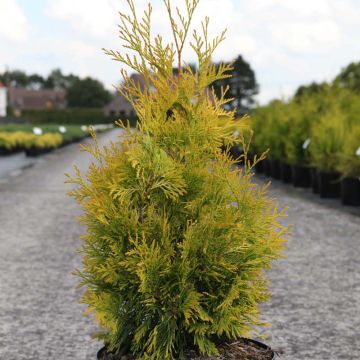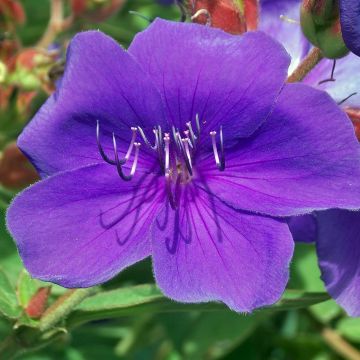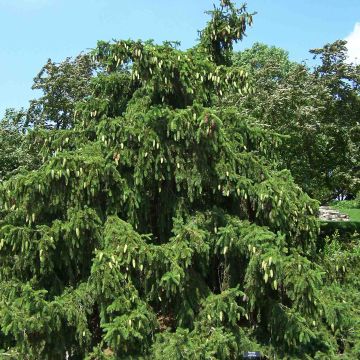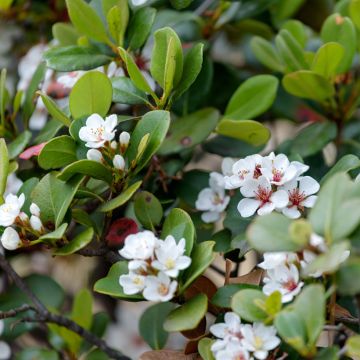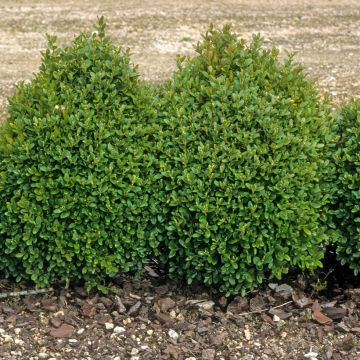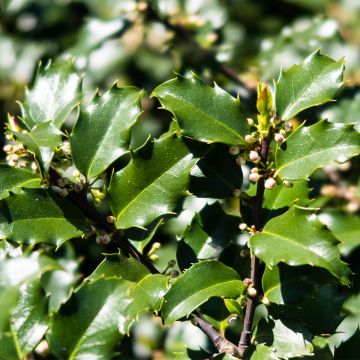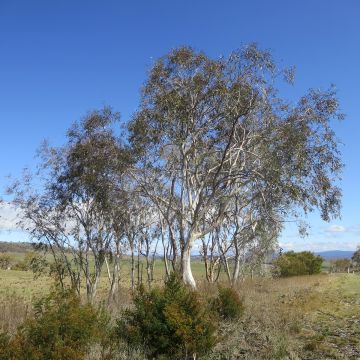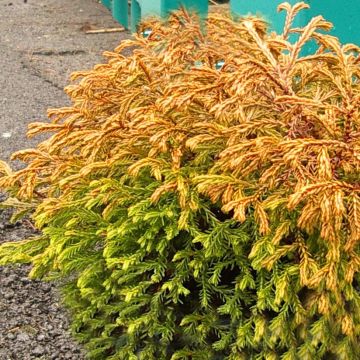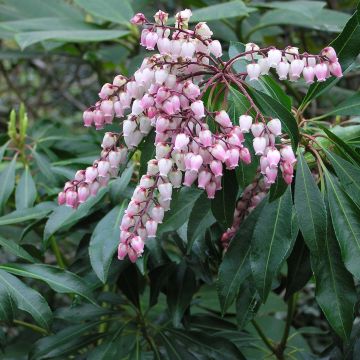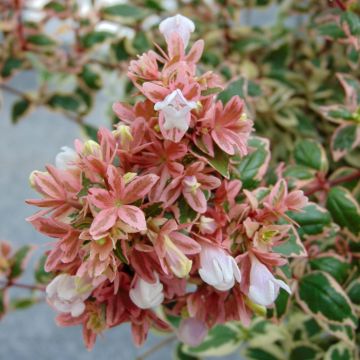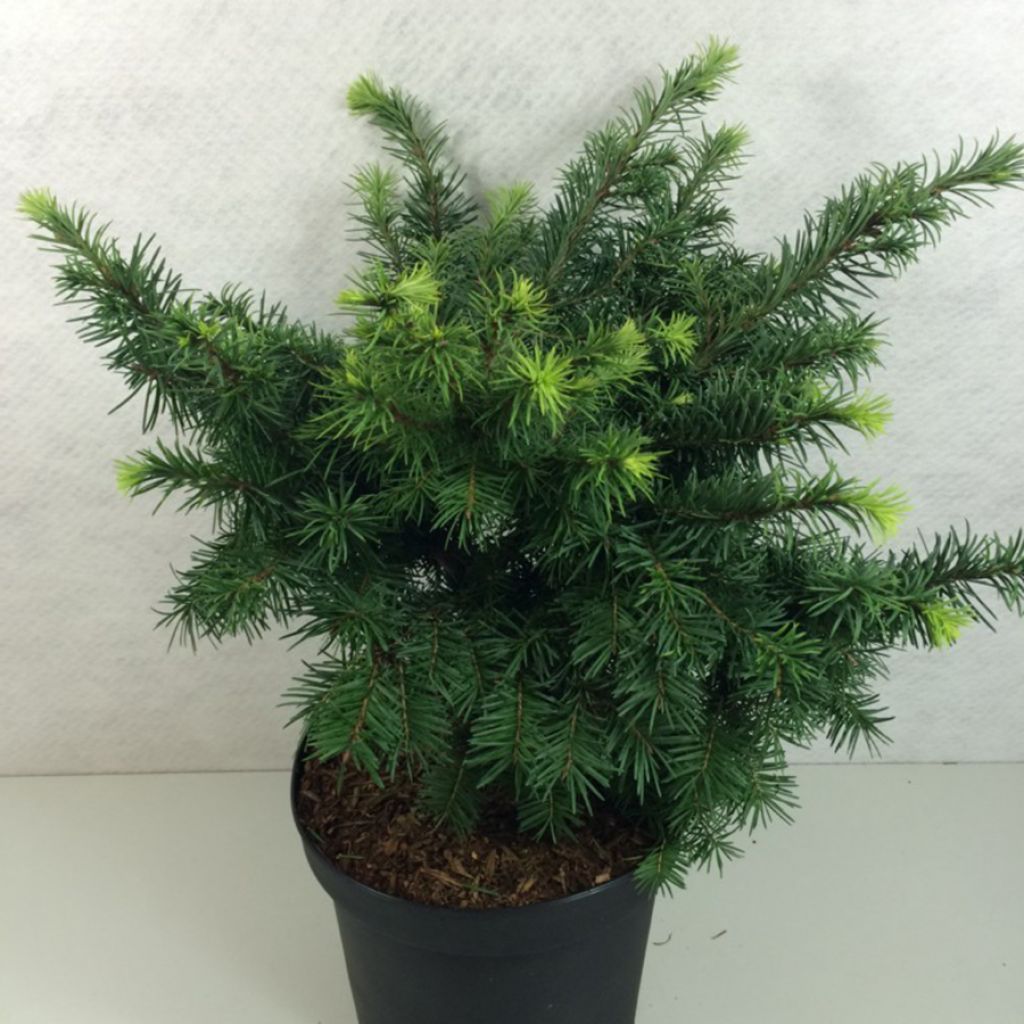

Pseudotsuga menziesii Fletcheri - Douglas - Pin de l'Oregon
Pseudotsuga menziesii Fletcheri - Douglas Fir
Pseudotsuga menziesii Fletcheri
Douglas Fir, Oregon Pine, Green Douglas Fir, Douglas Spruce
This item cannot be shipped to the selected country
Delivery charge from €5.90
More information
Schedule delivery date,
and select date in basket
This plant carries a 24 months recovery warranty
More information
We guarantee the quality of our plants for a full growing cycle, and will replace at our expense any plant that fails to recover under normal climatic and planting conditions.
From €5.90 for pickup delivery and €6.90 for home delivery
Express home delivery from €8.90.
Does this plant fit my garden?
Set up your Plantfit profile →
Description
Pseudotsuga menziesii 'Fletcheri' is a Douglas fir of modest size but with a generous habit, full of finesse and elegance. It slowly forms a large flat bush, majestic and flexible, supported by layered branches with very fine twigs, covered with delicate foliage which is bluish in spring. It remains attractive even in winter, when it darkens to deep green with a blue sheen. Delicate and robust, with true presence, it will be welcome in a large rockery, at the back of a flower bed or in a small garden. It is a hardy plant with slow growth that thrives in sunny, light, well-drained, humus-rich soil.
Pseudotsuga menziesii, commonly known as Douglas fir or Oregon pine, is a conifer in the pine family, native to North America. An adult tree (which can live between 400 and 500 years) reaches a height of 50 to 80 metres (164 to 262 feet) in its native regions. The Douglas fir exhibits rapid growth, which has encouraged its extensive planting in Europe for reforestation. It is a species that thrives in cool and moist climates and appreciates damp, light soils. Its heartwood is rot-resistant and widely used in construction.
The 'Fletcheri' variety is a dwarf form of great ornamental value, derived from this species. It is distinguished by its slow growth, its bushy, flat shape, and the delicacy that emanates from the architecture of its vegetation. Its growth is slow so that at 10 years old it will reach 1 metre (3 feet) in height and 1.5 to 2 metres in spread. Then, even more slowly and over many years, its height will reach towards 1.5 metres (5 feet) and its diameter towards 3 metres, approximately. Its branches are slightly ascending to horizontal and layered, covered with needles 10 to 20 mm (1in) long, thin, soft, flexible, arched, pointed, and narrowed at the base, initially bluish and then glaucous green, with a distinctly silvery underside. They are inserted like a cushion all around the twigs, forming a brush-like appearance and emitting a lemony scent when crushed. This plant has a powerful taproot and a well-developed root system that makes transplanting large specimens somewhat delicate but allows it to tap into the soil's deep nutritional resources.
The 'Fletcheri' Douglas fir is easy to grow in cool climates and will enhance a large rockery or flower bed. It will find a place in all gardens, even the smallest ones, as its size is naturally reduced and its growth is slow. It requires no maintenance and pairs well with large stones, the geometric lines of pools and masonry. It can be combined with complementary grasses or other dwarf conifers. The architectural qualities of conifers naturally impose themselves in the design of a contemporary garden, which prefers the aesthetics of shapes, silhouettes, and textures over flowers. These plants, with their reassuring permanence, provide lasting structure to a flower bed, mark pathways, and border terraces, easily replacing the strong presence of trimmed boxwood or holly. The key is to play with volumes and colours.
Report an error about the product description
Pseudotsuga menziesii Fletcheri - Douglas Fir in pictures
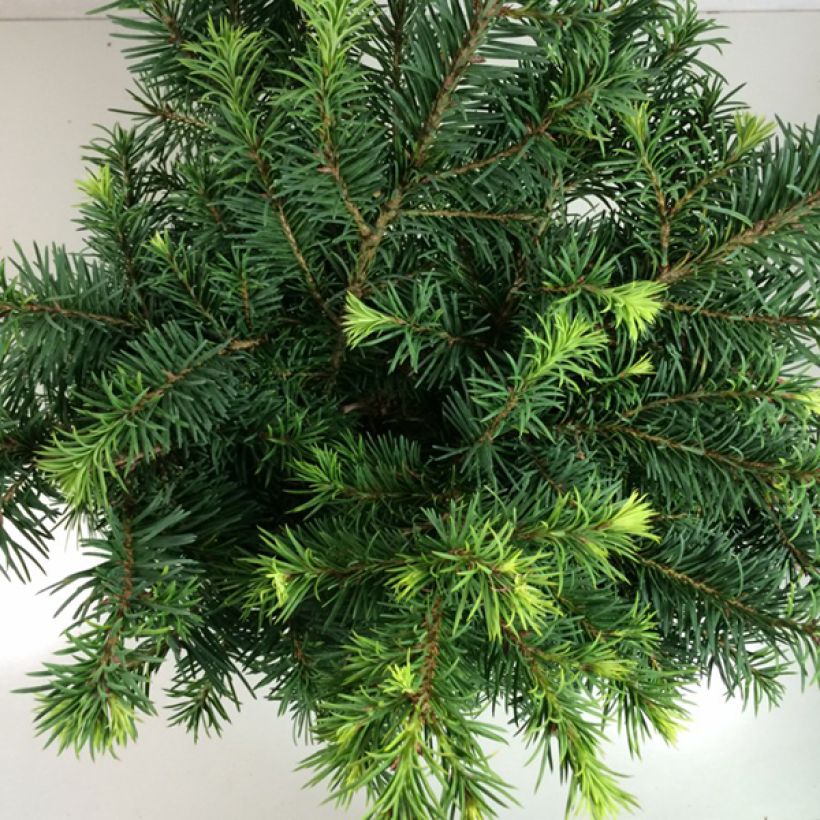

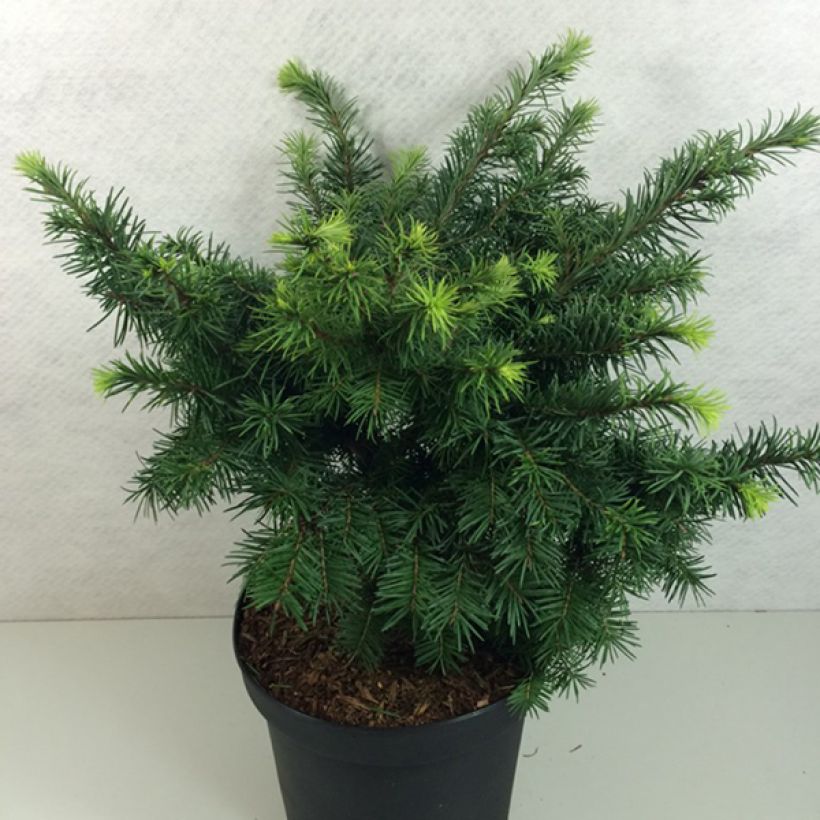

Plant habit
Foliage
Botanical data
Pseudotsuga
menziesii
Fletcheri
Pinaceae
Douglas Fir, Oregon Pine, Green Douglas Fir, Douglas Spruce
Cultivar or hybrid
Other Evergreen shrubs
Planting and care
Pseudotsuga menziesii 'Fletcheri' is best planted from September to November and from February to June in deep, light, fertile, well-drained soil, close to neutral or slightly acidic. It prefers loose and humus-rich, non-chalky soils. Choose a sunny and open location. Soak the roots well before planting, add organic fertiliser and water generously for the first three years, and in case of prolonged drought. In poor soil, you can apply a special conifer fertilizer every 2 years in April. Weed the soil in summer. This very hardy conifer (down to -20°C (1°F) at least) dislikes waterlogged, heavy and compact soils, alkaline and dry in summer. Pruning is not necessary. However, to accentuate the compact habit of this bush, you can shorten the shoots that are deemed too vigorous immediately above a bud in May-June if you wish.
Planting period
Intended location
Care
This item has not been reviewed yet - be the first to leave a review about it.
Haven't found what you were looking for?
Hardiness is the lowest winter temperature a plant can endure without suffering serious damage or even dying. However, hardiness is affected by location (a sheltered area, such as a patio), protection (winter cover) and soil type (hardiness is improved by well-drained soil).

Photo Sharing Terms & Conditions
In order to encourage gardeners to interact and share their experiences, Promesse de fleurs offers various media enabling content to be uploaded onto its Site - in particular via the ‘Photo sharing’ module.
The User agrees to refrain from:
- Posting any content that is illegal, prejudicial, insulting, racist, inciteful to hatred, revisionist, contrary to public decency, that infringes on privacy or on the privacy rights of third parties, in particular the publicity rights of persons and goods, intellectual property rights, or the right to privacy.
- Submitting content on behalf of a third party;
- Impersonate the identity of a third party and/or publish any personal information about a third party;
In general, the User undertakes to refrain from any unethical behaviour.
All Content (in particular text, comments, files, images, photos, videos, creative works, etc.), which may be subject to property or intellectual property rights, image or other private rights, shall remain the property of the User, subject to the limited rights granted by the terms of the licence granted by Promesse de fleurs as stated below. Users are at liberty to publish or not to publish such Content on the Site, notably via the ‘Photo Sharing’ facility, and accept that this Content shall be made public and freely accessible, notably on the Internet.
Users further acknowledge, undertake to have ,and guarantee that they hold all necessary rights and permissions to publish such material on the Site, in particular with regard to the legislation in force pertaining to any privacy, property, intellectual property, image, or contractual rights, or rights of any other nature. By publishing such Content on the Site, Users acknowledge accepting full liability as publishers of the Content within the meaning of the law, and grant Promesse de fleurs, free of charge, an inclusive, worldwide licence for the said Content for the entire duration of its publication, including all reproduction, representation, up/downloading, displaying, performing, transmission, and storage rights.
Users also grant permission for their name to be linked to the Content and accept that this link may not always be made available.
By engaging in posting material, Users consent to their Content becoming automatically accessible on the Internet, in particular on other sites and/or blogs and/or web pages of the Promesse de fleurs site, including in particular social pages and the Promesse de fleurs catalogue.
Users may secure the removal of entrusted content free of charge by issuing a simple request via our contact form.
The flowering period indicated on our website applies to countries and regions located in USDA zone 8 (France, the United Kingdom, Ireland, the Netherlands, etc.)
It will vary according to where you live:
- In zones 9 to 10 (Italy, Spain, Greece, etc.), flowering will occur about 2 to 4 weeks earlier.
- In zones 6 to 7 (Germany, Poland, Slovenia, and lower mountainous regions), flowering will be delayed by 2 to 3 weeks.
- In zone 5 (Central Europe, Scandinavia), blooming will be delayed by 3 to 5 weeks.
In temperate climates, pruning of spring-flowering shrubs (forsythia, spireas, etc.) should be done just after flowering.
Pruning of summer-flowering shrubs (Indian Lilac, Perovskia, etc.) can be done in winter or spring.
In cold regions as well as with frost-sensitive plants, avoid pruning too early when severe frosts may still occur.
The planting period indicated on our website applies to countries and regions located in USDA zone 8 (France, United Kingdom, Ireland, Netherlands).
It will vary according to where you live:
- In Mediterranean zones (Marseille, Madrid, Milan, etc.), autumn and winter are the best planting periods.
- In continental zones (Strasbourg, Munich, Vienna, etc.), delay planting by 2 to 3 weeks in spring and bring it forward by 2 to 4 weeks in autumn.
- In mountainous regions (the Alps, Pyrenees, Carpathians, etc.), it is best to plant in late spring (May-June) or late summer (August-September).
The harvesting period indicated on our website applies to countries and regions in USDA zone 8 (France, England, Ireland, the Netherlands).
In colder areas (Scandinavia, Poland, Austria...) fruit and vegetable harvests are likely to be delayed by 3-4 weeks.
In warmer areas (Italy, Spain, Greece, etc.), harvesting will probably take place earlier, depending on weather conditions.
The sowing periods indicated on our website apply to countries and regions within USDA Zone 8 (France, UK, Ireland, Netherlands).
In colder areas (Scandinavia, Poland, Austria...), delay any outdoor sowing by 3-4 weeks, or sow under glass.
In warmer climes (Italy, Spain, Greece, etc.), bring outdoor sowing forward by a few weeks.

































